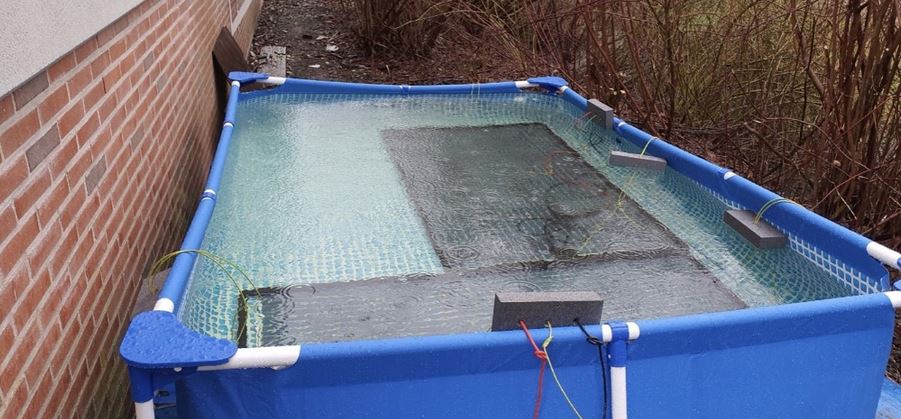Waterschap Rivierenland, the water authority of the Dutch provincies of Zuid-Holland, Gelderland, Noord-Brabant and Utrecht, is coordinating a research project aimed at developing a submersing modular raft for floating PV systems for inland water areas.
Dubbed Hide and Shine Floating Solar (HAS FPV), the system is claimed to be particularly suitable for countries where hurricanes and typhoons are frequent or which have other, frequent harsh weather conditions. The system design consists of a smart assembly of existing market components.
“A submersing solution is maybe a bit more expensive to construct but it may also result in lower costs for weather insurance, anchoring and construction while providing a longer lifespan,” the research coordinator, Johan Bakker, told pv magazine. “The modular system is currently being built by a group of Dutch companies including Easyfix Solar, EQAenergy, and Aveco de Bondt, among others.”
The HAS FPV system is designed with different buoys. The first full-scale raft is made of high-density polyethylene (HDPE) polymer and easy-fix aluminum and fibers. “With little water pumping, the raft will increase in weight and will submerge and surface by changing ballast,” Bakker explained. “During the submerging time, the solar modules are switched off.”

Image: Waterschap Rivierenland
The system is said to provide advantages for less windage, and for dry-up situations. “Our system is aimed essentially at minimizing storm damage during a 20-year lifespan and making construction lighter and suitable for bio-based fibers and lightweight modules,” Bakker went on to say, noting that conventional waterproof panels with an IP68 enclosure may be easily utilized. “We also tested submersing glass-glass bifacial modules and prepared special junction boxes during several months.”
The modules can be submerged totally or partially, depending on the weather conditions, and in case of a severe storm the panels can be submerged up to two meters below the surface.
The consortium plans to deploy the first pilot project, relying on 50 solar modules, at a water reservoir in Weurt, near the town of Nijmegen in the Dutch province of Gelderland in a few weeks' time. “The aim of this pilot is to research [and] develop the system for balancing, floating, and control behavior, in different weather circumstances, especially storm conditions,” Bakker emphasized.
In 2018, Waterschap Rivierenland joined forces with Dutch companies Blue21 and Hakkers NV, and with the Photovoltaic Materials and Devices (PVMD) unit of the Netherlands’ Delft University of Technology (TU Delft) to develop a new floating PV technology dubbed Innozowa. The first pilot project for this technology was also implemented at the water reservoir in Weurt.
This content is protected by copyright and may not be reused. If you want to cooperate with us and would like to reuse some of our content, please contact: editors@pv-magazine.com.




Great idea — we have considered it as well for our tracking floating PV solution, but were worried some about the wave action that would be happening when you wanted to sink the array. We think it might require sinking the array before the storm approaches — doable with a hurricane, but not likely with things like straight-line-winds or Cat 0-1 twisters. Our solution is to instead be above the waves with tall posts, and design strong racking with some flexibility, but we would sink for hurricanes.
Great to see others working to advance the field beyond current concepts!
Every swimmingpool and so on should have solarcells.